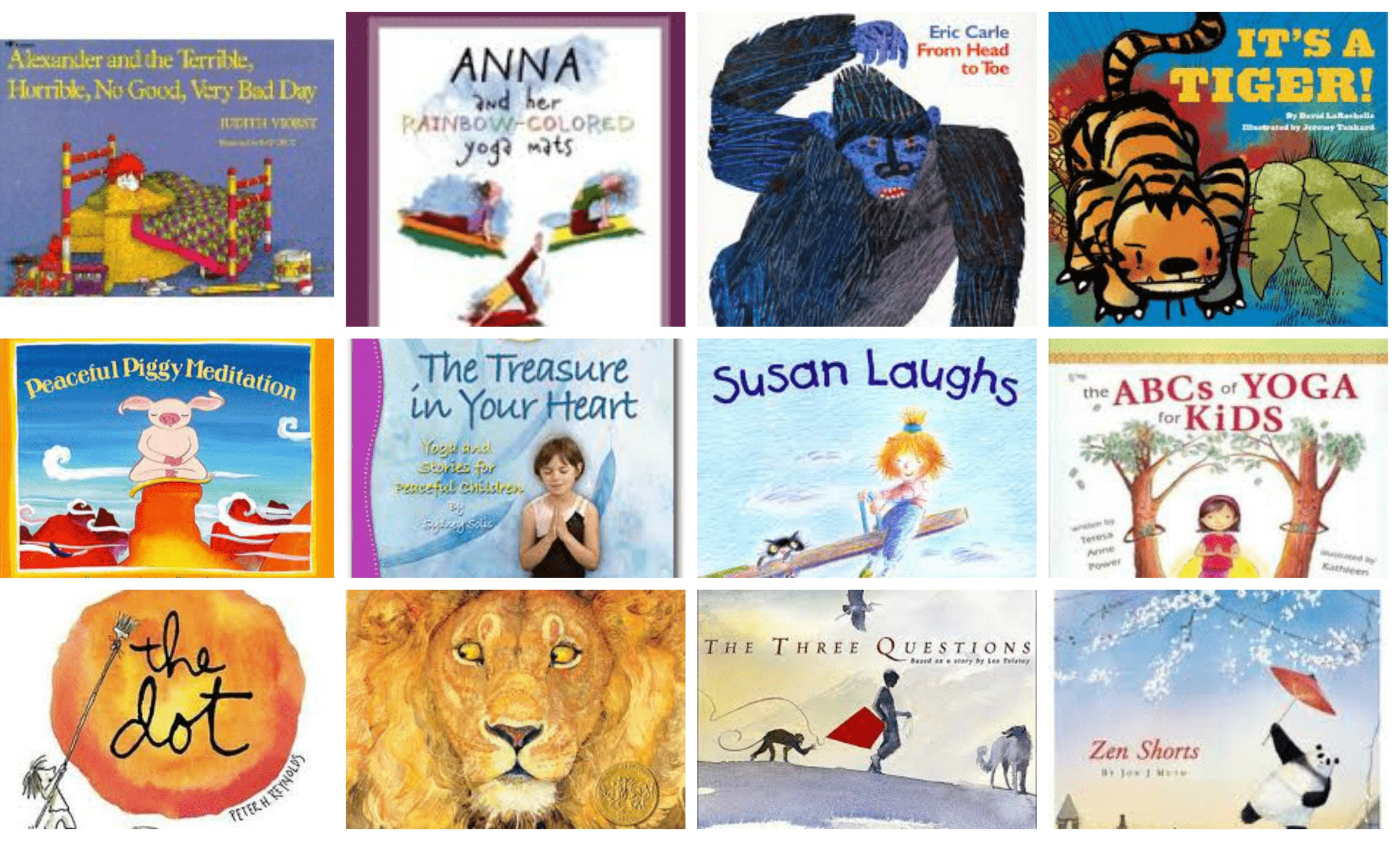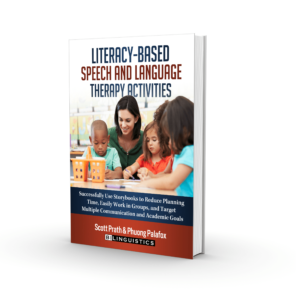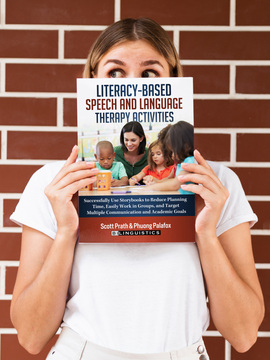This essay goes out to the nerds among us who demand proof for intervention strategies before implementing them (kudos). We are huge advocates of literacy-based intervention and are frequently asked:
Why do you use storybooks in intervention?
Storybooks have long been used as educational tools. They provide a structure for teaching concepts while keeping the student engaged and interested. Story structure additionally assists in retention and retrieval of classroom concepts due to familiarity with stories, repetition, and formulaic patterns. Book themes can be selected to allow students to explore fantasies, learn more about the real world, further students’ knowledge about current classroom subjects, and introduce new topics. These benefits of literacy-based lessons also have gained popularity in speech and language intervention.
Storybooks are beneficial to the work of educators from both an educational and a practical perspective. They provide an excellent way to keep students engaged while addressing their goals. Storybooks can be used with all ages and cultures to address a wide range of goals, including sound production, vocabulary, grammar, comprehension, social language, and conversational skills. Educators can work at different levels depending on the student’s needs ranging from decontextualized discrete skills to skills that require more global processing, such as inferring meaning in stories, understanding characters’ feelings, and producing story sequence. Educators can use story themes and contexts to help students generalize skills learned in storybook reading to other settings. On the practical side, using sets of storybooks with activities increases the efficiency of busy professionals by decreasing preparation time once the materials have initially been created. Additionally, parents can easily become a part of the learning process at home, which can greatly increase learning and retention of new skills.

Theory and Research
Researchers consistently have found that students with language learning difficulties have benefited from literacy-based intervention techniques. Shared reading activities have been shown to aid in students’ overall development, including social-emotional, language, and academic development. By providing a model or visual experience, books can promote social-emotional development by helping students identify with and understand complex emotions, such as guilt, pride, and shame (Doyle & Bramwell, 2006). Shared reading activities can also help provide students with the language necessary to talk about their emotions. Such socio-emotional development has been shown to contribute to students’ academic success (Denham, 1998; Elias, 2003; Zins, 2001). Storybooks promote language development by providing concurrent exposure to oral and written language (Teale & Sulzby, 1986). As Westby (1985) noted, narratives provide a bridge between oral communication that contributes to social interaction, and writing. This allows students to learn new information and promotes development in different areas that contribute to academic success.
Shared Reading

While books have been used as part of therapy for many years, current studies have found numerous benefits from the use of broader literacy-based intervention techniques. Shared reading experiences have been found to have a positive effect on students’ overall oral language skills (Debaryshe, 1993), as well as more specific skills. Storybook reading has been found effective for social language, such as establishing and maintaining joint attention and promoting conversational turn taking (Bruner, 1978).
Literacy-based intervention also has been used successfully for vocabulary and grammar development by increasing vocabulary and by increasing the understanding of word relationships and complex sentence structures (Gillam & Ukrainetz, 2006; Crowe, Norris, and Hoffman, 2000). Shared reading experiences give adults an opportunity to provide students with examples of language structures and vocabulary that they are not yet able to employ independently (Beed, Hawkins, & Roller, 1991; Bruner, 1978).
In addition to promoting growth in oral language development, shared reading experiences also provide an important link to literacy development. Reading to students promotes a greater eagerness to read (Mason & Blanton, 1971), exposes students to printed materials they are not yet able to read independently (Teale, 1984), and provides them with positive reading role models. Such exposure to books can provide a critical foundation for academic success.
How to Find Great Story Books for Speech Therapy
We have created an index of all the books we love for speech therapy. See how we combined research on literacy-based intervention and shared reading to make therapy materials: Literacy-Based Speech and Language Therapy Activities
For bedtime books, Tuck.com has a great list of bedtime stories and suggestions for how to make the stories enjoyable. Great Bedtime Stories.





